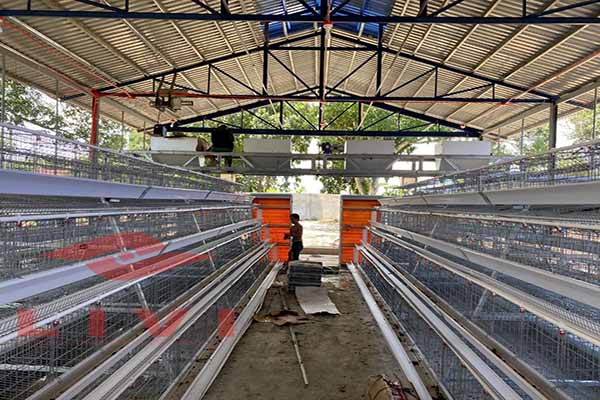How to Start a Chicken Farm with Government Assistance: A Step-by-Step Guide
Time : 2025-04-20
Are you thinking about starting your own chicken farm? It’s a great idea, especially with the rising demand for organic and locally sourced chicken. But how do you get started? How can you make your chicken farm a success, especially when it comes to navigating the world of government assistance? Fear not! In this comprehensive guide, we’ll walk you through the ins and outs of starting a chicken farm with government help. So, let’s dive right in!
1. Research and Planning
Before you even think about applying for government assistance, you need to have a solid plan in place. This means conducting thorough research and planning. Here are some key steps to get you started:
1.1 Determine Your Niche
What kind of chicken farm are you aiming to establish? Will it be a commercial farm focusing on egg production, or are you interested in raising broiler chickens for meat? Maybe you want to specialize in organic chicken production. Your niche will influence the type of government assistance you’ll need.
1.2 Write a Business Plan
A well-thought-out business plan is crucial for any business venture. It should include market research, a marketing strategy, financial projections, and a clear business model. This will not only help you secure government assistance but also give you a roadmap for success.
1.3 Location, Location, Location
Choose a suitable location for your chicken farm. Consider factors like accessibility, climate, proximity to suppliers, and proximity to your target market. The location will also impact the type of government assistance you may be eligible for.
2. Applying for Government Assistance
Once you have a solid plan and a clear vision for your chicken farm, it’s time to start applying for government assistance. Here’s how to navigate the process:
2.1 Identify Eligible Programs
Research government programs that can help you start your chicken farm. These may include grants, loans, and subsidies. In the United States, for example, programs like the Farm Service Agency (FSA) and the Rural Development program offer various forms of assistance.
2.2 Gather Required Documents
Before applying, make sure you have all the necessary documents ready. This typically includes proof of business registration, financial statements, a detailed business plan, and information about your farm’s operations.
2.3 Complete the Application Process
Once you’ve identified the appropriate government programs, complete the application process. Be prepared to provide additional information if needed. Keep in mind that this process can take time, so be patient.
3. Building Your Chicken Farm
Now that you’ve secured government assistance, it’s time to build your chicken farm. Here’s what you need to consider:
3.1 Choose the Right Chicken Breed
Selecting the right chicken breed is crucial for your farm’s success. Consider factors like egg production, growth rate, and resistance to diseases. Popular breeds for egg production include the White Leghorn, Rhode Island Red, and Ameraucana.
3.2 Design Your Facilities
Your chicken facilities should be designed with the well-being of your chickens in mind. This includes proper ventilation, lighting, and temperature control. Consult with a poultry expert or an architect specializing in farm design to ensure your facilities are up to par.
3.3 Set Up a Feed System
A reliable feed system is essential for healthy chickens. Consider purchasing a feed storage unit, feeders, and a delivery schedule. Also, make sure to provide clean, fresh water for your chickens at all times.
4. Ongoing Management and Growth
Running a successful chicken farm requires ongoing management and a commitment to growth. Here are some tips to help you along the way:
4.1 Monitor Health and Performance
Regularly monitor the health and performance of your chickens. Keep an eye on growth rates, egg production, and overall well-being. Implement biosecurity measures to prevent the spread of diseases.
4.2 Stay Informed
Keep up with industry trends, regulations, and best practices. Attend workshops, webinars, and conferences to learn from experienced poultry farmers.
4.3 Plan for Expansion
As your chicken farm grows, plan for expansion. This may include adding more chickens, expanding your facilities, or even venturing into new markets. Always stay adaptable and willing to pivot as needed.
Conclusion
Starting a chicken farm with government assistance can be a challenging yet rewarding journey. By following these steps, you’ll be well on your way to establishing a successful and sustainable farm. Remember to do your research, plan thoroughly, and stay committed to your goals. Good luck!












